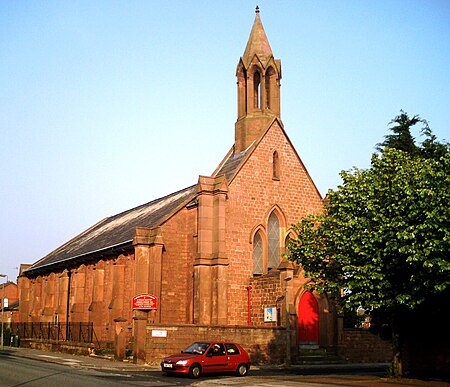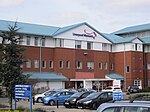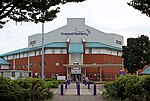Church of St Clement, Liverpool
19th-century Church of England church buildingsAnglican Diocese of LiverpoolChurch of England church buildings in MerseysideChurches completed in 1841Churches in Liverpool ... and 5 more
EngvarB from April 2014Gothic Revival architecture in MerseysideGothic Revival church buildings in EnglandGrade II* listed buildings in LiverpoolGrade II* listed churches in Merseyside

The Church of St Clement is in Beaumont Street, Toxteth, Liverpool, England. It is an active Anglican parish church in the diocese of Liverpool, the archdeaconry of Liverpool, and the deanery of Toxteth and Wavertree. The church is recorded in the National Heritage List for England as a designated Grade II* listed building.
Excerpt from the Wikipedia article Church of St Clement, Liverpool (License: CC BY-SA 3.0, Authors, Images).Church of St Clement, Liverpool
Beaumont Street, Liverpool Edge Hill
Geographical coordinates (GPS) Address External links Nearby Places Show on map
Geographical coordinates (GPS)
| Latitude | Longitude |
|---|---|
| N 53.397 ° | E -2.9525 ° |
Address
Saint Clement's Toxteth Park
Beaumont Street
L8 0UZ Liverpool, Edge Hill
England, United Kingdom
Open on Google Maps









